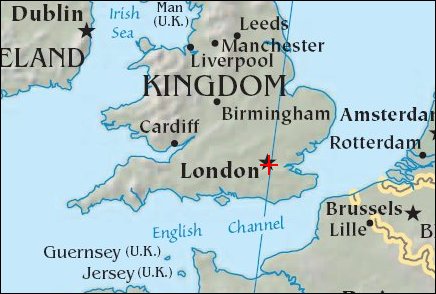| Earth from Space is a free eBook describing our planet from a satellite's perspective. Fore more information, please read the About pages. |

|

Home  Europe Europe  Great Britain Great Britain  London London |
|
| See also: East London | |






|
|
LondonPosition of center of photo (Lat/Long): [51.51062/-0.09437] |
|
  Numerous well-known landmarks appear in this detailed view of London (United Kingdom) taken from the International Space Station. To capture the shot, the astronaut had to look back along the Space Stationís ground track, from a position over northern Germany. The most striking visual features are green open spaces such as Regentís Park Numerous well-known landmarks appear in this detailed view of London (United Kingdom) taken from the International Space Station. To capture the shot, the astronaut had to look back along the Space Stationís ground track, from a position over northern Germany. The most striking visual features are green open spaces such as Regentís Park
The relatively small area known as the City of London coincides with the ancient walled Roman city of Londinium on the north bank of the river (the line of the wall is marked closely for almost its entire length by modern streets), and includes St. Paulís Cathedral
Several large structures visible in this image are railroad stations: three serving areas north of London (Euston, St. Pancras, and Kingís Cross), and Waterloo Station serving southern Britain. The London Eye |
| Source of material: NASA |
Further information: WikiPedia article on London
Last Update: 2011-03-30

